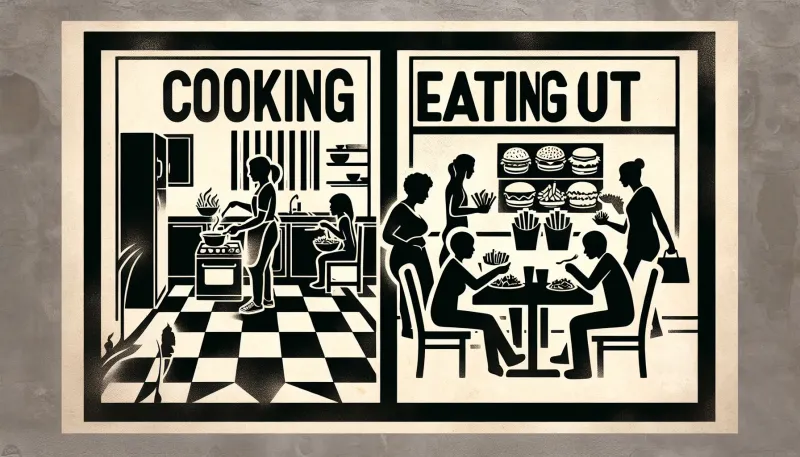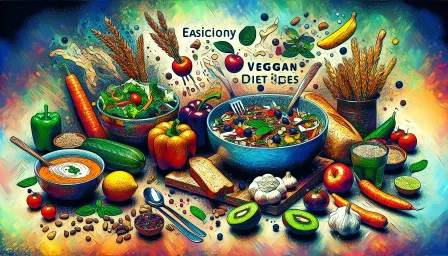Cooking at Home vs Eating Out: Which is Healthier and More Affordable?

Cooking at home versus eating out: which option is healthier and more affordable? Explore the pros and cons of both, backed by research and expert advice.
As modern lifestyles become increasingly busy, the question of whether cooking at home or eating out is healthier and more affordable is more relevant than ever. This article will analyze both options in terms of health benefits, cost, time investment, and overall convenience, providing you with a comprehensive understanding to help you make an informed decision.
The Health Perspective: Cooking at Home vs Eating Out
Nutritional Control
When you cook at home, you have complete control over the ingredients, portion sizes, and cooking methods used. This allows for more balanced and nutritious meals, lessened reliance on processed foods, and the avoidance of hidden sugars and unhealthy fats commonly found in restaurant meals.
On the other hand, eating out often means consuming larger portion sizes and higher calorie meals. A study published in the Journal of Nutrition Education and Behavior found that meals from fast food and casual dining restaurants tend to have excessive amounts of sodium, calories, and unhealthy fats.
Sanitary Conditions
Maintaining food safety and hygiene needs rigorous adherence to standards, something easier to control at home. While restaurants must follow health codes, lapses can occur, potentially leading to foodborne illnesses. A report by the Centers for Disease Control and Prevention (CDC) highlighted repeated violations in many food establishments, raising concerns over sanitary practices.
Cost Analysis: Cooking at Home vs Eating Out
Cost of Ingredients vs Cost of Meals
Initially, buying ingredients for cooking at home can seem costly. However, these ingredients often yield multiple meals, making the per-meal cost significantly lower than dining out. According to a study by Forbes, the average cost of a meal prepared at home is around $4, compared to an average of $13 at casual dining restaurants.
Hidden Costs of Eating Out
When eating out, additional costs such as tips, taxes, and overpriced beverages can considerably inflate the final bill. Over time, these hidden costs accumulate, making regular dining out substantially more expensive than home-cooked meals.
Time Investment: Cooking at Home vs Eating Out
Preparation and Cooking Time
One of the main deterrents to cooking at home is the time required for meal preparation and cooking. After a long day at work, the convenience of restaurant food or take-out can be appealing.
However, with proper meal planning and the use of time-saving kitchen appliances like slow cookers or Instant Pots, the time investment needed for home cooking can be reduced. Moreover, cooking in bulk and storing meals for later can further minimize daily preparation time.
Travel and Waiting Time
Although eating out eliminates cooking time, it does involve travel and waiting for food. This is particularly true during peak hours when restaurants are crowded. These factors combined can sometimes make eating out just as time-consuming as cooking at home.
Convenience and Lifestyle: Cooking at Home vs Eating Out
Flexibility and Menu Variety
Cooking at home offers versatility in menu choices and dietary adjustments, allowing meals to be tailored to individual preferences and dietary restrictions. Additionally, home cooking can accommodate spontaneous meal changes and leftovers can be creatively repurposed.
Eating out provides convenience, especially for social occasions or when exploring different cuisines. However, reliance on restaurant food can limit dietary customization and increase the temptation of unhealthy food choices.
Cooking as a Life Skill
Cooking at home not only improves dietary habits but also enhances life skills. Cooking fosters creativity, provides a sense of accomplishment, and can be a fun and educational family activity. Teaching children how to cook can instill healthy eating habits early on and create lasting memories.
Addressing Common Pain Points
Lack of Cooking Skills
Many avoid cooking at home due to a perceived lack of culinary skills. However, numerous online resources, cooking classes, and step-by-step recipe guides are available to help novices gain confidence. Start with simple recipes and gradually build up to more complex dishes.
Busy Schedule
For those with hectic lifestyles, meal prepping can be a game-changer. Dedicating a few hours once a week to prepare meals can save time on busy weekdays. Additionally, keeping a well-stocked pantry with easy-to-make ingredients can make home cooking more feasible.
Conclusion
In the debate of cooking at home vs eating out, both options have their pros and cons. While eating out offers convenience and variety, cooking at home provides more pronounced benefits regarding health, cost, and life skills. Ultimately, the best approach may be to strike a balance between the two, enjoying the nutritional and economic benefits of home-cooked meals while occasionally dining out for social experiences and culinary exploration.
By making informed choices and taking advantage of meal planning and preparation strategies, you can benefit from the best of both worlds and lead a healthier, more affordable lifestyle.



























